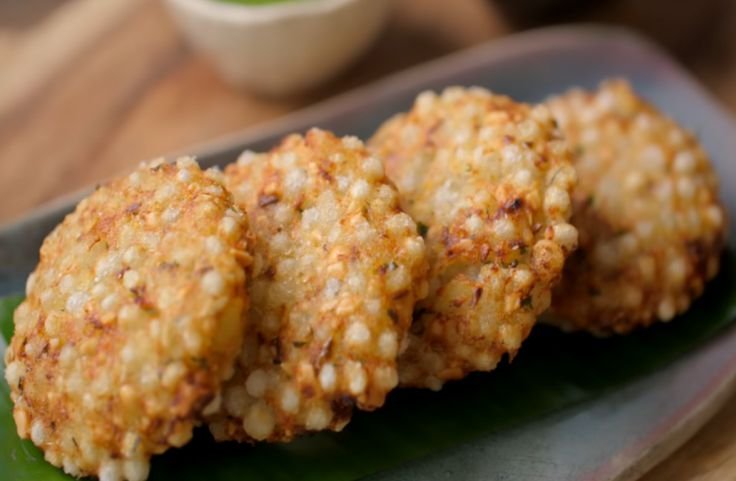Sabudana vada recipe gives you perfectly crispy edges and a soft, nutty center, ideal for fasting days, tea-time cravings, or when you need a quick, satisfying Indian snack.
When you bite into a sabudana vada, you experience a crunch that gives way to a soft, comforting center.
You can smell the roasted peanuts and taste the gentle earthiness of tapioca pearls mingled with spices.
This popular Indian snack is a favorite on fasting days, when you seek food that satisfies both your hunger and tradition.
Each fritter carries flavors shaped by regional touches, from the herbs used in the mix to the chutneys served alongside.
It is more than just something to eat between meals. It connects you to a cultural rhythm that values flavor, texture, and shared moments.
Whether served hot from a roadside stall or prepared at home for a festival, sabudana vada invites you to savor a taste that has been loved for generations.
Related: Guide To Tapioca Pearls
Table of Contents
- What is Sabudana Vada?
- Ingredients Needed for Sabudana Vada
- How to Soak Sabudana Properly
- Step-by-Step Recipe for Sabudana Vada
- Tips to Make Perfect Sabudana Vada
- Serving Suggestions
- Common Mistakes and How to Fix Them
- Variations of Sabudana Vada
- Conclusion
What is Sabudana Vada?
Sabudana vada is a traditional Indian fritter made from tapioca pearls, known locally as sabudana, which are derived from the cassava plant.
It is especially popular during Hindu fasting periods such as Navratri and Mahashivratri, when grains are avoided, and high-energy foods are preferred.
The vada is prepared by combining soaked sabudana with mashed potatoes, roasted peanuts, green chilies, and spices, then shaping the mixture into patties and frying them until golden brown.
Crispy on the outside and soft inside, it is enjoyed with chutneys or yogurt, adding layers of flavor.
Beyond being a snack, sabudana vada holds cultural and spiritual significance, representing a blend of nourishment, tradition, and shared celebration that connects people to their heritage during sacred occasions.
Related: How to Make Cassava Tortilla Chips at Home
Ingredients Needed for Sabudana Vada
To make sabudana vada, you need ingredients that blend taste, texture, and tradition. Each component plays its role in giving the vada its crunch, aroma, and satisfying bite.
Sabudana: The Heart of the Recipe
You start with sabudana, also called tapioca pearls, which give the vada its signature bite.
Soak them in water for a few hours until they become soft and translucent.
Proper soaking is important because it helps the pearls bind well with other ingredients and fry evenly.
When soaked correctly, sabudana absorbs flavors beautifully and creates that tender yet chewy texture you expect from a good vada.
Potatoes: The Binding and Body
Boiled potatoes act as the glue that holds everything together while adding a smooth, creamy base.
They also balance the mild flavor of sabudana, making the fritters more satisfying.
Mash them while they are still warm to avoid lumps and help them blend seamlessly.
Potatoes bring both structure and substance to the vada, ensuring it stays intact during frying and delivers a hearty bite with every mouthful.
Roasted Peanuts: The Nutty Crunch
Roasted peanuts bring a pleasant crunch and a rich, earthy note that complements the soft texture of the vada.
Coarsely grind or crush them so they add texture without overpowering other flavors.
They also boost the nutritional value of the snack by adding protein and healthy fats.
During fasting periods, this extra nourishment can help you stay energized while still keeping the dish light and flavorful.
Spices and Herbs: The Flavor Boost
Cumin seeds give an earthy aroma, while green chilies add a gentle heat that balances the mild starchiness of sabudana and potatoes.
Fresh coriander leaves bring brightness to each bite, and a pinch of salt ties everything together.
Some cooks also add a touch of turmeric for color and a faint earthy undertone.
These ingredients create a flavor profile that makes the vada stand out.
Oil for Frying: The Crisp Maker
Use a neutral oil such as vegetable or peanut oil to let the natural flavors of the ingredients shine.
Heat it well before adding the vadas so they crisp up instantly and do not absorb excess oil.
Proper frying is the final step in achieving that golden, crunchy crust while keeping the inside soft.
This contrast in texture is what makes sabudana vada irresistible.
Related Posts
Sabudana Kheer Recipe: The Indian Comforting Staple
Cassava Crackers: Crunchy Goodness from the Whole Root
Types of Tapioca Pearls: A Comprehensive Guide
How to Make Sabudana Thalipeeth
How to Soak Sabudana Properly
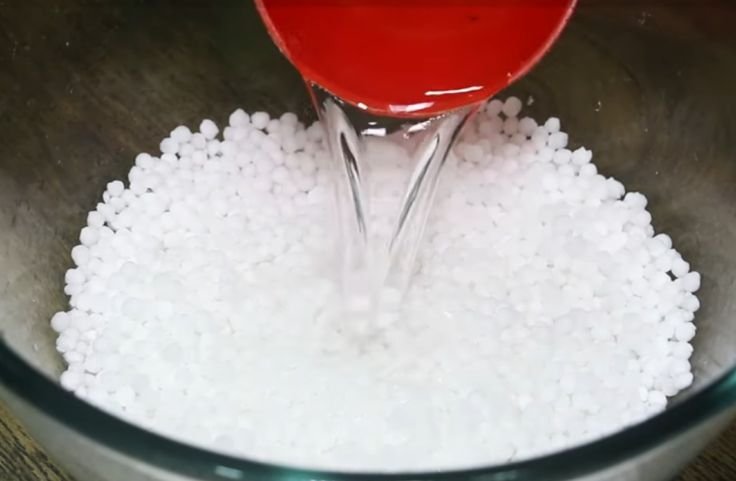
To soak sabudana properly, start by rinsing the pearls under cold water to remove impurities.
For each cup of sabudana, use 1.5 to 2 cups of water, ensuring the water level is slightly above the pearls.
This balance prevents sogginess or undercooking.
Let them soak for 4 to 6 hours, or overnight for best results. When ready, the pearls should be translucent, soft, and hold their shape without being gritty.
Test by pressing one between your fingers; it should break easily. If still firm, soak longer.
Avoid over-soaking, as it can make them mushy, or under-soaking, which leaves hard bits in the vada.
Correct soaking creates the ideal texture, forming the foundation for crispy, flavorful sabudana vada.
Related: How to Make Cassava Tortillas
Step-by-Step Recipe for Sabudana Vada
Making sabudana vada is simple when you follow each step carefully. From soaking the pearls to frying them golden, every stage adds to the flavor and texture.
Soak the Sabudana for the Right Texture
Rinse sabudana under cold water until the water runs clear to remove starch.
Add 1.5 to 2 cups of water for each cup of sabudana, just enough to cover the pearls.
Let them soak for 4 to 6 hours, or overnight for best results.
Proper soaking ensures they turn soft and translucent without becoming mushy, giving your vada the chewy and tender bite that balances perfectly with its crispy exterior.
Prepare Potatoes and Peanuts
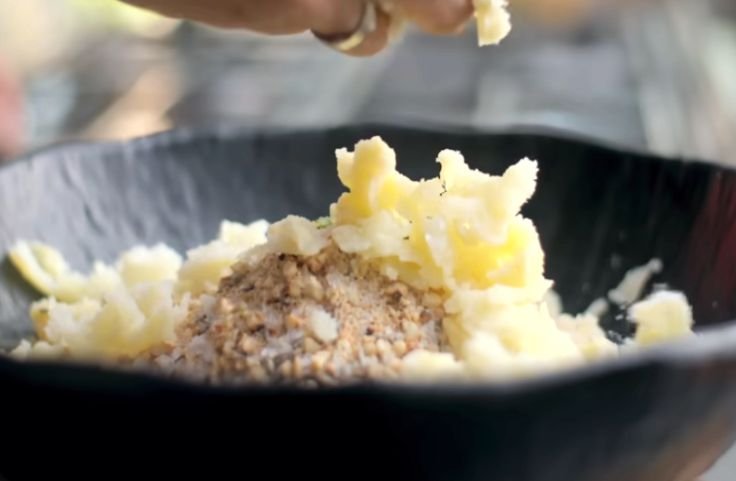
While sabudana soaks, boil the potatoes until tender. Peel and mash them while warm so they mix smoothly with other ingredients.
Roast the peanuts until golden, then coarsely grind them.
This pairing of potatoes and peanuts not only helps bind the vada but also adds a creamy base with a nutty crunch.
Their flavors blend beautifully with the mild taste of the sabudana.
Mix the Ingredients into a Dough

In a mixing bowl, combine soaked sabudana, mashed potatoes, ground peanuts, chopped green chilies, coriander leaves, and salt.
Use your hands to blend the ingredients evenly until you have a dough that holds its shape. Avoid adding water.
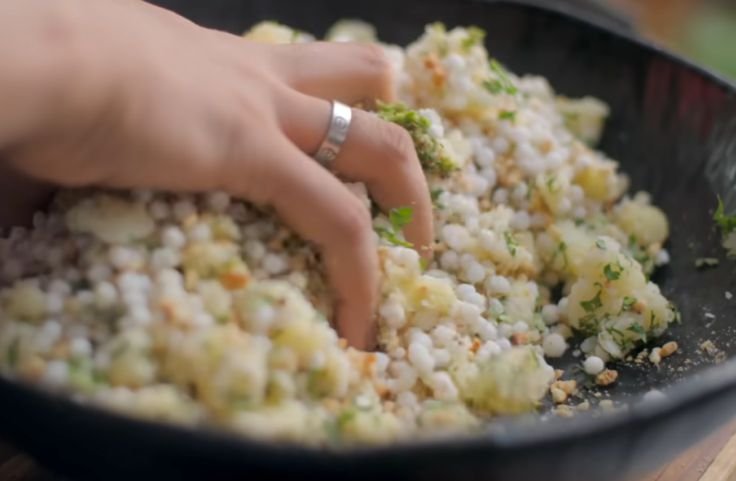
The mixture should be moist enough to bind but dry enough to fry without falling apart. This balance is key to getting perfect vadas every time.
Shape the Vadas Evenly

Divide the dough into equal portions and roll each into a ball.
Flatten them gently into discs, making sure they are not too thick, which helps them cook evenly and stay crisp.
Press lightly while shaping so they do not break in the oil.
Uniform size and thickness also make the frying process easier and help maintain a consistent golden color across all vadas.
Fry until Golden and Crisp
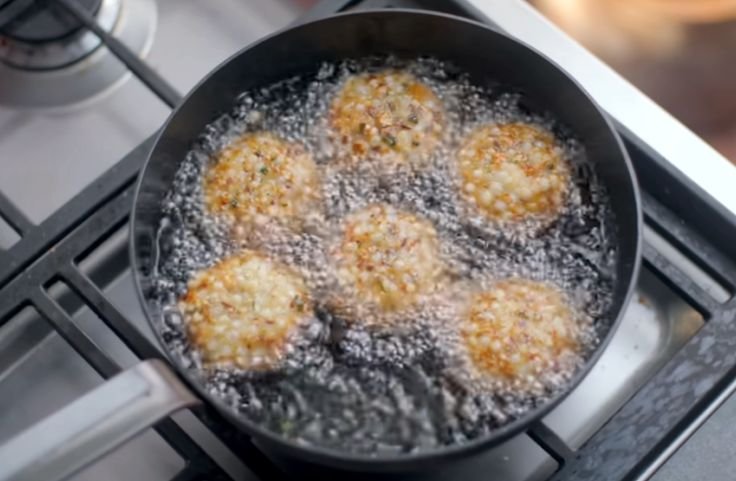
Heat a deep frying pan with oil over medium heat. Test by dropping a small piece of dough; it should sizzle and rise immediately.
Place the vadas gently into the oil without overcrowding. Fry each side for about 3 to 4 minutes until golden brown and crisp.
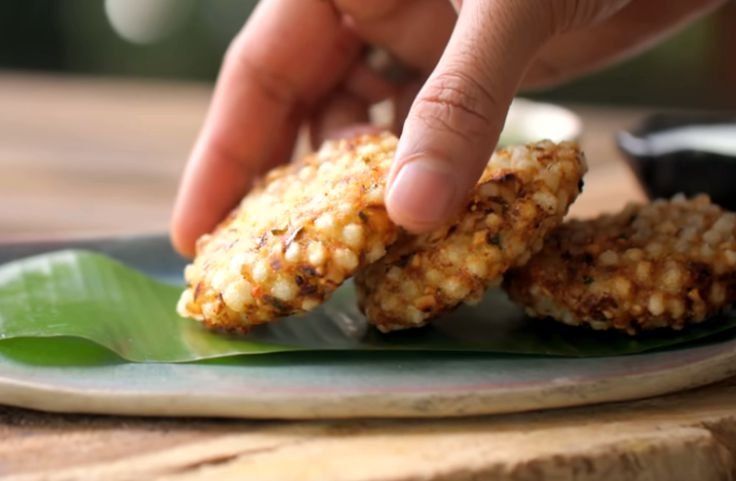
Remove and place on paper towels to absorb excess oil. Serve hot with your choice of chutney or yogurt.
Tips to Make Perfect Sabudana Vada
Making sabudana vada that is crisp outside and soft inside depends on small but important steps.
These tips will guide you to get the right flavor, texture, and balance every time.
Add Roasted Peanuts for Flavor and Crunch
Roasted peanuts give sabudana vada its nutty aroma and light crunch.
Crush them coarsely so they blend well without overpowering the texture.
This extra layer of flavor works beautifully with the mild tapioca pearls and creamy potatoes.
Control Moisture for the Right Dough
After soaking sabudana, drain it completely. Let it rest in a colander to remove excess water.
A dough that is too wet can break while frying, while one that is too dry may not bind well.
Choose the Right Oil and Maintain Heat
Use peanut or vegetable oil for frying since they have high smoke points.
Fry in small batches to keep the oil temperature steady, which helps the vadas cook evenly and turn golden without absorbing excess oil.
Rest Fried Vadas Before Serving
Once fried, place the vadas on a paper towel to remove extra oil. This simple step keeps the crust crisp and light.
Serve them hot with chutney or yogurt for the best taste.
Serving Suggestions
Sabudana vada can be enjoyed in different ways that bring out its flavor and make each bite more satisfying.
Pairing it with the right accompaniments can turn it into a complete snacking experience.
Serve with Yogurt Mint Chutney
Fresh mint leaves blended with yogurt and spices create a cool, creamy chutney that balances the crisp texture of sabudana vada.
The refreshing flavor works well during fasting days and keeps each bite light yet flavorful.
Pair with Tamarind Chutney
Tamarind chutney offers a tangy sweetness that cuts through the mild taste of the vada.
This pairing gives you a burst of contrasting flavors, making the fritters more exciting and enjoyable from the first bite to the last.
Enjoy Masala Chai
A hot cup of masala chai pairs beautifully with sabudana vada. The warmth and spice from the tea complement the soft interior and crispy exterior of the fritters, making them ideal for festive afternoons.
Combine with Fresh Curd
Serving sabudana vada with fresh curd adds a mild tang and creamy texture.
The curd also lightens the richness of the fried snack, giving you a balanced and wholesome option during fasting periods.
Common Mistakes and How to Fix Them
Making sabudana vada can sometimes be tricky, but knowing what goes wrong and how to correct it helps you get the perfect texture and taste every time.
Vadas Breaking Apart in Oil
If your vadas break while frying, it usually means the mixture is too loose.
Drain the soaked sabudana well, mash it slightly, and mix it firmly with potatoes, peanuts, and spices. Adding a little arrowroot can help bind it better.
Soggy Texture After Frying
Over-soaking sabudana makes the mixture too wet, leading to sogginess. Soak for 4 to 5 hours, drain completely, and let it rest in a strainer.
A drier mix helps you achieve crisp vadas without extra oil absorption.
Lack of Crispiness
If your vadas are not crispy, the oil temperature is likely off. Keep the heat on medium so the vadas cook evenly.
Too hot and the outside browns quickly; too cool and they turn greasy.
Variations of Sabudana Vada
Sabudana vada is more than just the familiar mix of soaked tapioca pearls, potatoes, and spices.
You can give it exciting twists to match your taste and health goals.
Air-Fried or Baked Sabudana Vada
If you want the same crunch without deep-frying, try making sabudana vada in an air fryer or oven.
You use much less oil while still getting the golden, crispy exterior and soft, flavorful inside.
Air-frying keeps the calorie count low without taking away the authentic taste.
It is also a quicker, cleaner cooking method with less mess compared to deep-frying.
Pair your vadas with fresh green chutney or tangy yogurt dip for a satisfying snack.
You can even make them ahead and reheat before serving.
This healthier version lets you enjoy sabudana vada more often without feeling weighed down afterward.
No-Potato Sabudana Vada
For a lighter take, skip the potatoes and replace them with grated or mashed vegetables like carrots or zucchini.
Carrots give a gentle sweetness, while zucchini brings a mild earthy note, making each bite more interesting.
This variation works well if you are cutting carbs, experimenting with new flavors, or simply adding more vegetables to your diet.
The tapioca pearls still hold the vadas together, and the vegetables blend in to keep the texture soft yet firm.
You can also add green chilies or coriander for an extra flavor kick. It is a tasty way to enjoy variety while keeping the recipe healthy.
Stuffed Sabudana Vada
You can make sabudana vada more exciting by adding a flavorful filling. Try stuffing them with spiced lentils for protein, paneer for creaminess, or sautéed vegetables for a colorful surprise.
The stuffing stays warm and flavorful inside, giving you a burst of taste in every bite.
This twist makes the vada more filling, turning it into a light meal rather than just a snack.
It also opens the door for creativity, as you can adjust the stuffing based on your mood or what is available in your kitchen.
Serve them hot with chutney to create a snack that feels festive and satisfying.
Conclusion
Sabudana vada brings together texture, aroma, and tradition in every bite.
Crisp edges give way to a soft, nutty center filled with the gentle flavors of tapioca pearls, potatoes, and roasted peanuts.
Whether enjoyed during fasting days, served with chai for an afternoon treat, or prepared for family gatherings, it offers comfort and cultural connection.
With the right soaking, mixing, and frying techniques, you can create vadas that stay light yet satisfying.
Variations like air-fried, no-potato, or stuffed versions make it easy to adapt to your taste.
Each batch is more than food; it is a celebration of flavor, heritage, and shared moments.
How do I keep sabudana vada from breaking while frying?
Drain soaked sabudana completely, mash slightly, and bind well with potatoes and peanuts. Avoid excess moisture, as a dry, well-mixed dough holds shape better in oil.
Can I make sabudana vada without potatoes?
Yes. Replace potatoes with grated vegetables like carrots or zucchini. They add flavor, nutrients, and moisture while helping the mixture bind and hold shape during frying.
Is sabudana vada suitable for fasting days?
Yes. Sabudana vada is a popular vrat snack made without grains, using tapioca pearls, potatoes, peanuts, and spices, making it ideal for Hindu fasting periods like Navratri.
Can I bake or air-fry sabudana vada?
Yes. Baking or air-frying uses less oil while keeping the vadas crispy outside and soft inside. This method works well for a lighter, healthier snack option.
References

Chimeremeze Emeh is a writer and researcher passionate about Africa’s most transformative root crop—cassava. Through his work at cassavavaluechain.com, he explores the entire cassava industry, from cultivation and processing to its diverse applications in food, health, and industrial use.
He also writes for palmoilpalm.com, where he shares his extensive experience and deep-rooted knowledge of palm oil, covering red palm oil, palm kernel oil, and refined products. His work there reflects his lifelong connection to agriculture and his commitment to promoting sustainable value chains in Africa.
Driven by curiosity and purpose, Chimeremeze aims to shed light on how cassava continues to empower communities, strengthen food systems, and link traditional farming wisdom with modern innovation.

